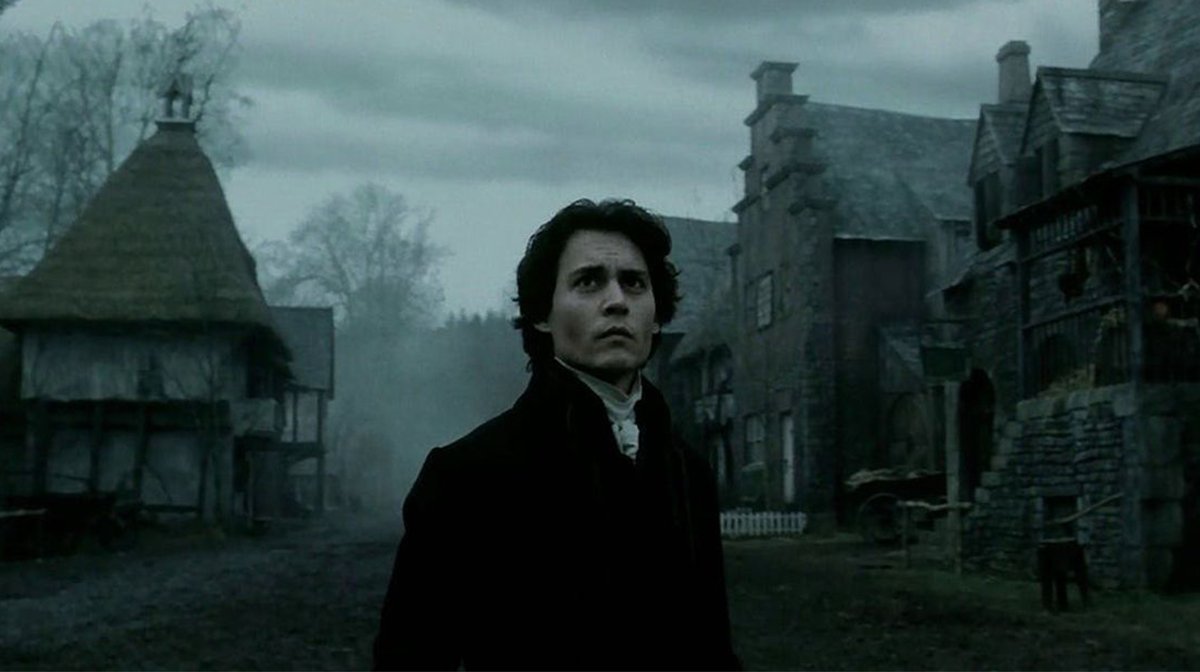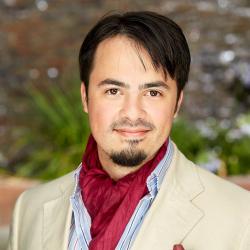Halloween has somehow become a celebration of America becoming American, a New World unlike the Old World, a place where horror is a literary or cinematic genre rather than a memory—the dimly recollected past stretching back millennia through seemingly endless suffering, man’s inhumanity to man, older than civilization. Yet Halloween also reminds us that we are not so far advanced in our peaceful prosperity that we have overcome the suffering that flesh is heir to. It’s the celebration when those dark possibilities return, and are strangely attractive, suggesting we have somehow lost something for all our gains.
The first American Halloween story must be Washington Irving’s Legend of Sleepy Hollow, which forms a pair with his more famous Rip van Winkle as tales of Americanization, the arrival of the new republican freedom that revealed a very different people to the peoples of the Old World. The story was filmed several times, including by Walt Disney, but Tim Burton’s 1999 version fits our Halloween spirit best, since it’s a charming and sometimes funny ghost story, pitting reason against the occult.
Johnny Depp stars as Constable Ichabod Crane of New York City and Christina Ricci as the enchanted but endangered heiress in distant Sleepy Hollow, upstate. They are connected by a series of gruesome decapitation murders committed by the Headless Horseman, played wild-eyed by Christopher Walken. Ichabod must solve these murders and thus prove his modern theories are right. He’s against torture, prejudice, and all the bad things of the past; he’s for science, empirical investigation, and seeing with one’s own eyes rather than believing what one hears. This is 1790s America, newly founded and already beset with troubles, wrestling with the question of whether it can deliver the justice it promises to all as equals, removing the premodern privileges and cruelties that previously organized all affairs.
In Sleepy Hollow, Ichabod discovers this premodern world of deceit, intrigues, masters and servants, murders and inheritances, a village where pretty much everyone is related by blood, where hierarchies seem unquestionable. It’s pre-American, the settlers are Dutch, van Garretts and van Tassels, and it is sleepy in the sense that it is past-bound. It is opposed to the active, not to say restless, character of America, epitomized by New York City, then becoming the nation’s largest city. Even the Headless Horseman is part of the past, a Hessian mercenary from Germany, an enemy of the battle-born republic.
Sleepy Hollow is about the founding of America out of a pre-American world whose most distinctive feature is the occult—the witches, the magic, the idea that esoteric knowledge has a power over the affairs of man that is greater than anything else, the stuff Halloween is made of. And why must we remember this founding? The answer is obvious: because the past can always return. Why remember it at Halloween if it is a serious problem, since Halloween is as unserious as it gets? Because the Old World has one charm the new one sorely lacks—beauty. The ghost story is about deadly beauty. The cure for it, if there is a cure, must be a certain kind of poetry, or storytelling, a beauty that can charm without becoming deadly.
Hence the oddest feature of the movie: the idea that white magic is a good thing, as opposed to the black magic that summons the Headless Horseman from hell. Add to it the portrayal of a Puritan Christian as a fevered fantasy of the Inquisition, recalling Edgar Allan Poe’s short stories. Burton associates storytelling with magic; first it seems he means that they make appearances that have power over the souls of men, but then it turns out that science can do that, too, with its own wonders. The association is deeper—both magic and poetry are frowned upon in America, leaving people in a way undefended against evil. Our modern science is not enough, because we are not machines.
The story affirms that the church stands against hell and cannot be entered by the evil Headless Horseman. Still, it is not so strong that people will not go mad and turn on each other, since the church demands faith, yet people may harbor evil secrets rather than confess them. Christianity might lead to a problem Ichabod calls “the mask of virtue,” leading to more cruelty rather than mercy. A certain wisdom is necessary to deal with this problem, which involves storytelling, a kind of investigation that reveals those secrets that cannot be forced out by confession.
Science seems to triumph in Sleepy Hollow, which flatters us. We live in a world so dominated by science that even the images we use to describe human things—everything from love to politics—are taken from the vocabulary and the phenomena of the natural sciences and their technological consequences. This would seem to make Halloween useless, yet we also live in an America overwhelmed by Halloween occultism!
Burton dramatizes this all-American conflict in his protagonist, the scientist Ichabod, who is not above reproach. First, he is unmanly. Secondly, human affairs are foreign to him; his suspicious mind tends to see low motives, perhaps a necessary defect in a policeman; yet he fails to consider how far those low motives can go, how secretive and yet ambitious they can be. He’s a half-hearted cynic at best. Thirdly, he doesn’t know his own heart. Burton presents this problem in a myth: Ichabod’s dreams, in which his beautiful mother is tortured by his Puritan father. He loves his mother, yet resembles his father—he describes himself as “beaten down” by his reason, “pinioned by chains of reasoning.” He identifies his strength, thinking, with violence. This version of poetry is nothing but dramatization of the ordinary conflicts in our souls.
Ichabod is taught to love in the story; his awkward appearance is an image of the deeper problem in his heart—he is not quite human. Although he devises very clever machines, he does not concern himself with himself, with his own deep-seated needs. Love is supposed to offer him a chance at happiness, a guide to and compensation for the suffering his pursuit of justice necessarily involves. But it shows something deeper, too, a connection with storytelling, since both his mother and his beloved are portrayed as innocuous, defenseless witches whose only power is to charm and therefore to add to low motives higher motives. Tenderness and desire to nurture what’s good in us are identified as true magic, a necessary corrective to the harshness of punitive justice and strict morality. Burton emphasizes this by telling the story in as earnest and fairy-tale like a way as possible.
Sleepy Hollow was a very successful movie, proving Burton’s point about the importance of beauty, charm, and earnest appeal to our hope that love might see us through our perils. It made more than $200 million and received three Oscar nominations for its beauty—cinematography, costume design, and art direction, winning the last of the three. It deserves also some consideration as a tale of the necessity for storytelling and for bringing out the fears that we must conceal for the most part. Watch it again this Halloween and reenact the drama of the national founding!

